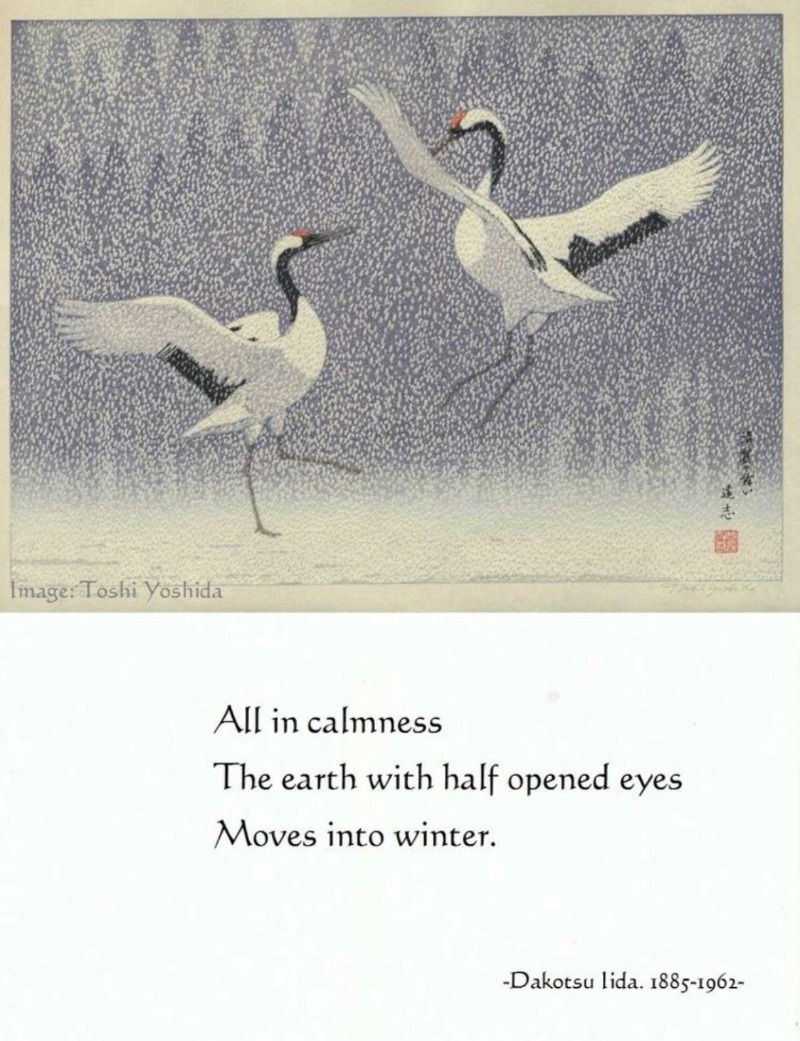- sherriethorley
- Jan 8, 2023

Living according to the season is one of the most important principles of Traditional Chinese Medicine for health and healing.
The different seasons affect both our physical and mental states, how you feel in Winter may differ from how you feel in Summer, as a practitioner this is something I like you to be mindful of.
Chinese Medicine originates from Taoist thoughts, thousands of years old. Taoism states the more we mirror nature, the healthier we will be. Sleep, food, and lifestyle choices should be gently tweaked each season to bring us into rhythm with the natural change. This will optimise energy levels and assist your central nervous system to establish a sense of calm. This is one of the reasons I offer seasonal acupuncture treatments, to help you move more smoothly through the seasons of the year.
Restoration
Winter, and more specifically mid-winter is a deep Yin time. It is dark, cold, inward, internal, and a time of reflection, it is time for stillness and hibernation. It is hard to adapt our modern lives to the seasons, and especially hard in winter, however, it is important to find the appropriate balance for rest and repair to ensure we aren’t pouring from an empty cup or trying to pour from one overflowing. This restorative season encourages us to conserve our energy for the year ahead.
In Taoism Winter is aligned to the Water Element and Kidney Official (organ) representing intelligence, wisdom, and development. The Kidneys provide us with our power and in Western medicine is the root of our adrenal health. As the controller of fluids, the Kidney’s distributes our vitality through body, mind and spirit. It energises our internal organs and system functions such as fertility health, blood pressure regulation and bone health, and stimulates our consciousness, identity, and ambitions. As you can imagine it’s an organ I like to keep healthy.
So, how do we keep our Kidneys healthy? Good sleep, ideally going to bed before 10pm, avoiding stimulants, reducing sugar as it’s a stimulant that hits our insulin activating adrenals. Stress reduction is important as things like trying to do too much, working late, eating late also tax our adrenals.
How can I help myself you ask?
To keep ourselves healthy we want to guard against cold in Winter, external cold from the environment can penetrate the body and get stuck, causing contraction and obstruction. Internal cold comes from over consumption of cold food or liquids. Seasonal viruses create cold, so if you are affected, giving yourself time to rest and fight the virus is important, the body will need to raise its temperature to kill the pathogen. Finally, the emotion of fear can create internal cold as it causes us to contract, inhibiting our flow and free movement. If cold gets stuck internally it can become very uncomfortable and unhealthy both physically and mentally.
To help move cold from the body we need to keep warm, so lots of movement, keeping your feet & back warm will support the Kidney energy and blood flow through to the reproductive organs. The Kidney meridian begins on the base of the foot traveling all the way through your core, and its partner organ the Bladder travels through the back & neck. Socks and scarves are your best friend this season and ideally something that covers your Kidneys, cropped tops aren’t recommended in winter (sorry to those that love them).
What can I eat?
I don’t think it will come as a surprise that it is suggested to consume a largely warm diet in Winter, with warming soups & stews full of root vegetables and some protein. Warm water and cups of herbal tea are useful, especially ginger tea as it is warm in nature. Foods to help tonify the Kidney energy are saltier in nature, such as miso soup, seafood, nuts, beans and seeds.
Activate your Bubbling Spring!
Acupressure can stimulate your Kidney Meridian. Here’s a little acupressure guidance to support you through mid-winter to help activate your Bubbling Spring.
The Kidney Meridian starts with Kidney 1 located, appropriately, on the sole of your foot, from these Yin depths comes an outpouring of vitality from the point Bubbling Spring. A spring brings life, vitality and cleansing, its movement invigorates, replenishes, quenches thirst and fear and brings calm.

Stimulating this point will help calm the mind, reduce anxiety, clear the brain and help sleep. I recommend a little pressure or self-massage on this point to activate the Bubbling Spring which will bring emotional calm and enhance sleep. You can intensify the experience by using a carrier oil with a drop of lavender for relaxation, or bergamot for inspiration. I hope you enjoy the feeling it creates.
If you want to know more or have questions about anything in this article or want to book an appointment you can email me at hello@vitalitygardenacupuncture.com.
References
Dao Health, accessed 03012023, The Dao Does ~ Living with the Season ~ Winter - The Dao (thedaohealth.com.au)
Leggett D, 1994, Helping Ourselves, A guide to Traditional Chinese Food Energetics. Meridian Press.
Pritchard P, 2002, Healing with whole foods, North Atlantic Books
Sterman A, 2020, Welcoming Food, Classical Wellness Press
Hatton LC, 2014, Acupuncture Point compendium




